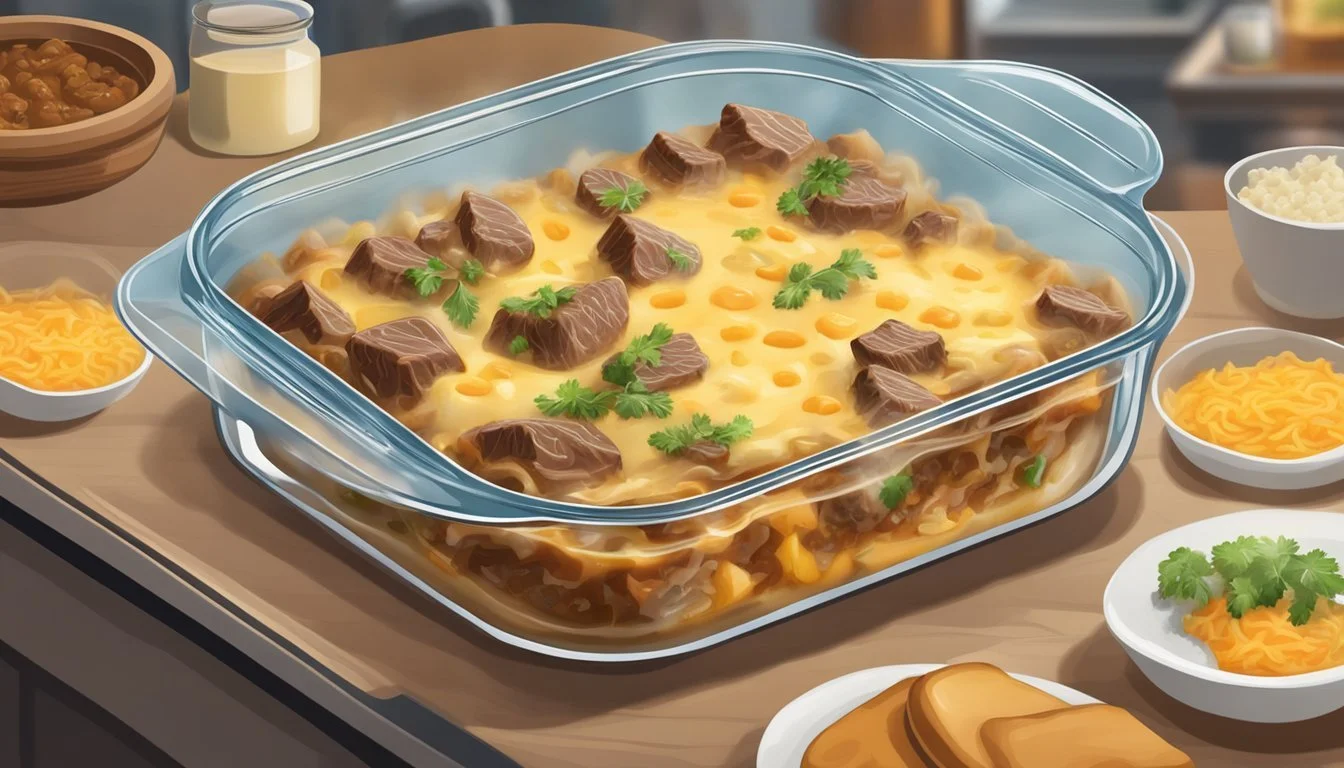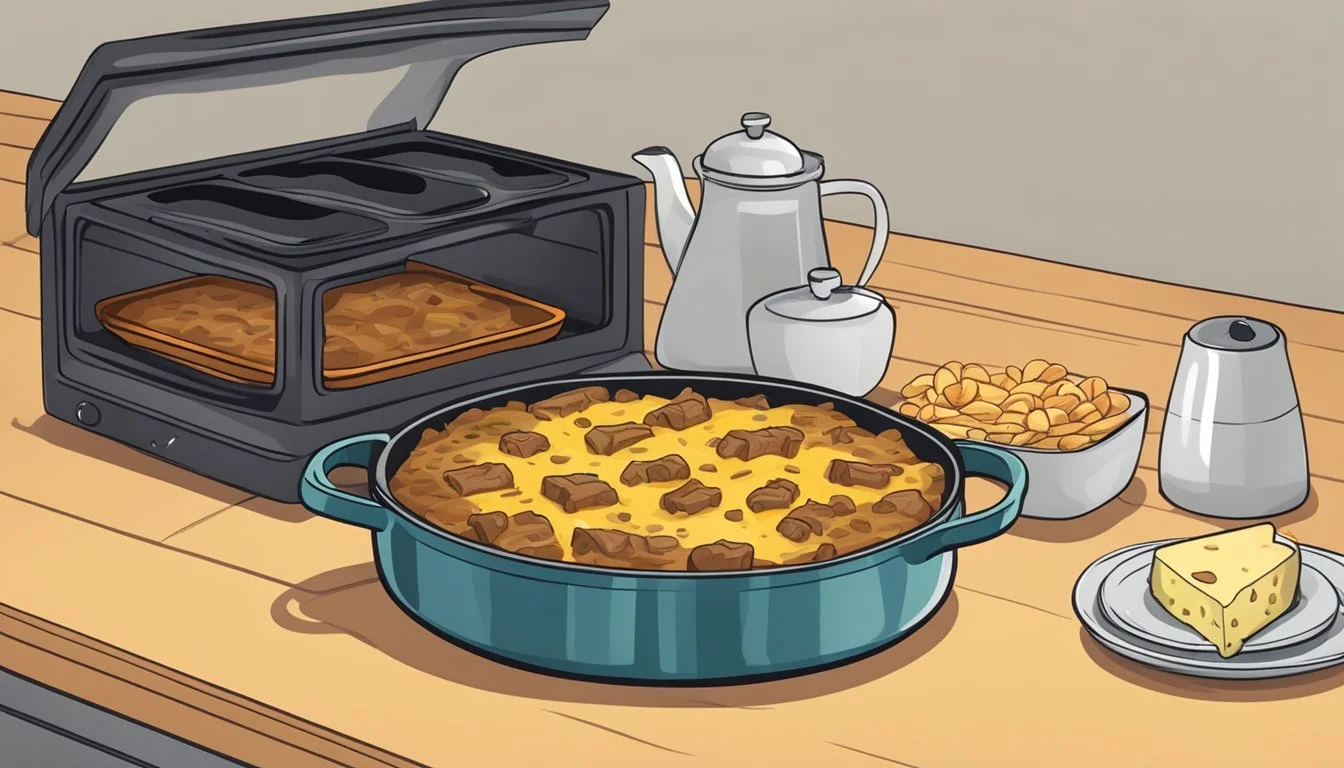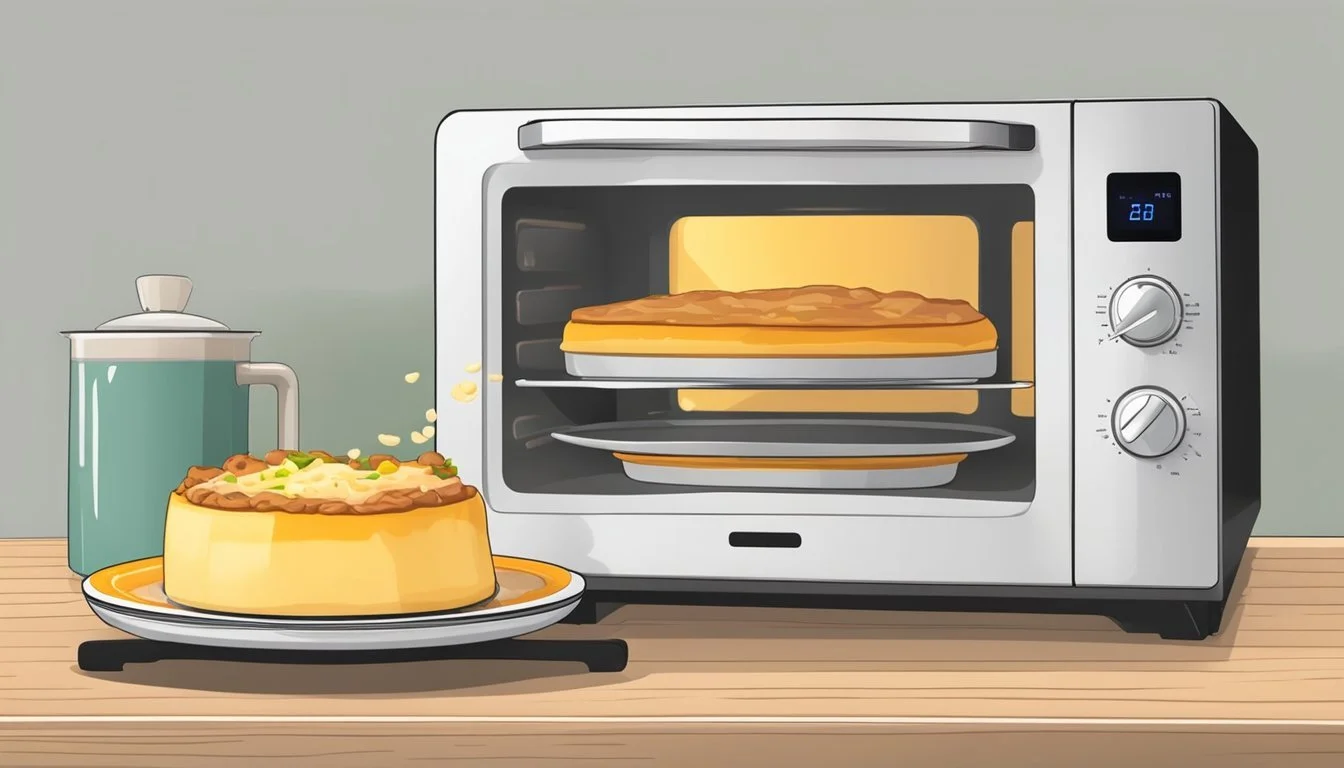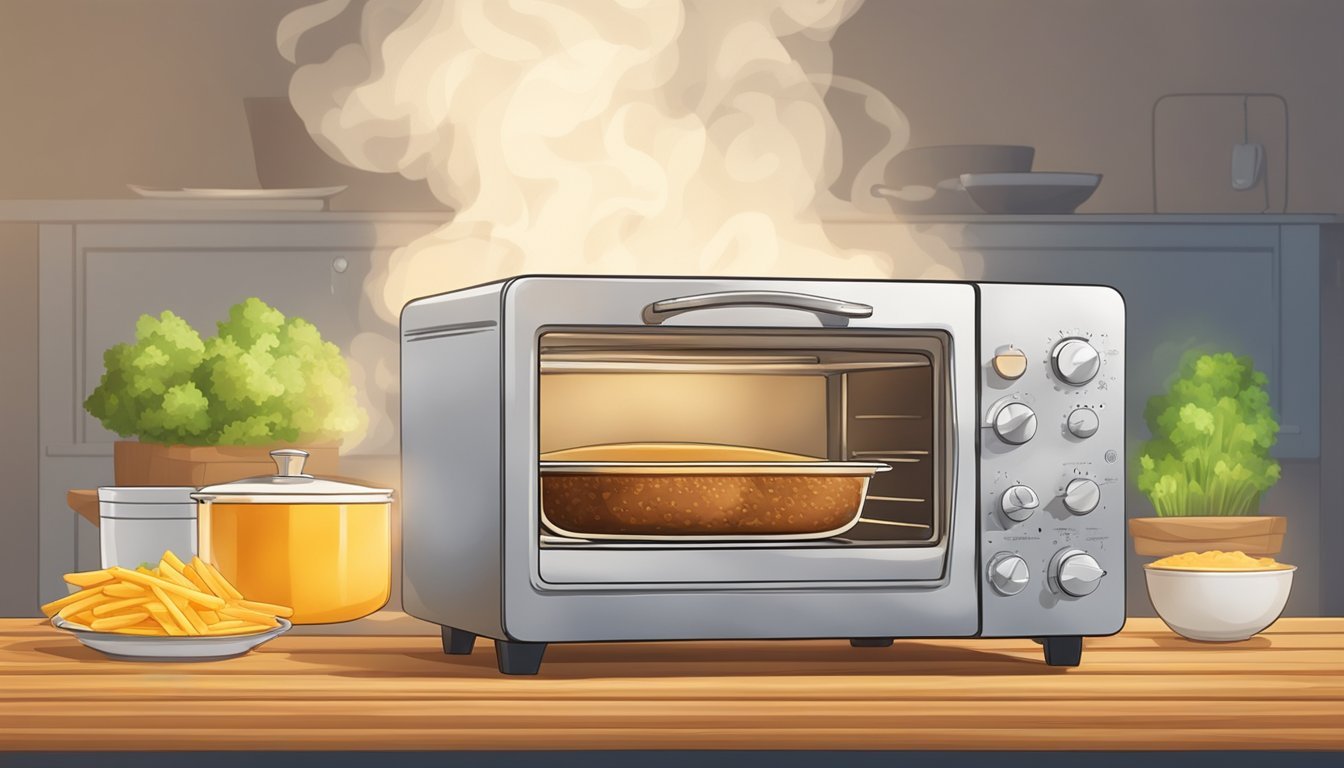How to Reheat Beef and Cheese Casserole for Perfect Flavor and Texture
Reheating a beef and cheese casserole can be a simple task if done correctly. A common method involves using an oven, where the goal is to maintain the casserole's moisture and flavor. Place a moist paper towel over the surface and cover the dish with aluminum foil to retain moisture, then heat it in a preheated oven at 350°F for 20-30 minutes until the internal temperature reaches a safe 165°F.
Using a moderate oven temperature ensures that the reheating process is even, preventing the dish from drying out. If you want to maintain the integrity of your leftovers, taking the casserole out of the fridge 30-60 minutes before reheating can also promote even heating and protect your bakeware.
Keeping an instant-read thermometer handy can help ensure that the casserole is reheated to a food-safe temperature. By following these steps, they can enjoy their reheated beef and cheese casserole without compromising its delicious taste and texture.
Understanding Casseroles
Casseroles are beloved dishes known for their versatility and ease of preparation. They typically combine various components to create a balanced and flavorful meal, and can be tailored to different tastes and dietary preferences.
Components of a Casserole
A casserole dish usually involves several key ingredients: protein, vegetables, starch, and sauce. Proteins like beef and chicken provide the main substance, while vegetables such as carrots, peas, and broccoli add texture and nutritional value.
Cheese often serves as a top layer, adding a creamy finish that enhances flavor. A thick sauce, whether it's a creamy béchamel or tomato-based, binds the ingredients together and ensures the dish remains moist during baking.
Bread crumbs may be sprinkled on top for added crunch.
Types of Casseroles
Various types of casseroles cater to different meal times and dietary needs. Breakfast casseroles often include eggs, cheese, and breakfast meats like bacon or sausage. These are ideal for a hearty start to the day.
Vegetable casseroles highlight produce like squash, zucchini, and bell peppers and are often complemented with grains like quinoa or rice. Meat casseroles—such as the classic beef and cheese casserole—are robust and filling options for lunch or dinner.
Each type of casserole offers a unique combination of flavors and textures, making them a favorite among both home cooks and professional chefs.
Pre-Reheating Preparation
Proper pre-reheating preparation ensures that a beef and cheese casserole heats evenly and maintains its delicious texture and taste. This involves carefully thawing frozen casseroles and bringing refrigerated casseroles to room temperature.
Thawing Frozen Casserole
When dealing with a frozen casserole, it's essential to plan ahead. One of the best methods is to transfer the frozen casserole from the freezer to the fridge at least 24 hours before you plan to reheat it. This gradual thawing process helps preserve the texture and flavors of the dish.
If you’re short on time, you can use your microwave's defrost setting. Place the casserole in the microwave and set it on defrost. Rotate and check it every few minutes until fully thawed. Avoid quick defrosting at high temperatures, as this can lead to uneven heating and spoil the casserole’s texture. Always ensure the casserole is thoroughly defrosted to avoid cold spots during reheating.
Bringing Casserole to Room Temperature
Before placing the casserole in the oven, allow it to come to room temperature. This typically takes about 30 to 60 minutes. Letting the casserole sit out ensures that it reheats evenly and reduces the time needed in the oven. Remove any plastic wrap or coverings from the casserole before letting it warm up. Cover the dish with aluminum foil to keep it clean and prevent any foreign particles from getting in.
For best results, check the edges and surface of the casserole. If it appears dry, sprinkle a couple of tablespoons of water or broth around the edges. This will help maintain moisture during reheating and prevent the cheese from overcooking or becoming too hard.
Reheating Techniques
Reheating a beef and cheese casserole requires attention to temperature and moisture to ensure that it remains delicious and safe to eat. Below are effective methods for reheating that cater to different kitchen appliances and preferences.
Oven Reheating Method
Preheat the oven to 350°F (175°C). Place the casserole in an oven-safe dish and cover it with aluminum foil. This helps retain moisture and prevents the cheese from hardening.
Bake for 20-30 minutes or until the internal temperature reaches 165°F (74°C). Use an instant-read thermometer to check the temperature. Removing the casserole from the fridge 30-60 minutes prior can also promote even heating.
Microwave Reheating Method
Transfer the beef and cheese casserole to a microwave-safe dish. Cover the dish with a microwave-safe lid or plastic wrap, leaving a small vent for steam to escape.
Heat the casserole in the microwave on medium power for 2-3 minutes. Stir halfway through to ensure even heating. If necessary, continue heating in 1-minute intervals until reaching an internal temperature of 165°F (74°C).
Stovetop Reheating Method
Use a large skillet over medium heat for stovetop reheating. Add a small amount of water or broth to the skillet to prevent sticking and drying out.
Place the casserole in the skillet and cover it with a lid. Heat, stirring occasionally, for 7-10 minutes or until the casserole reaches the desired temperature.
Using the Air Fryer or Toaster Oven
Preheat the air fryer or toaster oven to 350°F (175°C). Place the casserole in an oven-safe or air-fryer-compatible dish. Cover with aluminum foil to maintain moisture.
Heat for 10-15 minutes, checking periodically to ensure even heating. The goal is to achieve an internal temperature of 165°F (74°C).
Slow Cooker Warming Method
Transfer the casserole to the slow cooker. Set the slow cooker to the low setting. Cover and heat for 2-3 hours or until the casserole is thoroughly warmed.
Stir occasionally to distribute heat evenly. This method is ideal for maintaining moisture and achieving a gradual, even reheating process.
Food Safety Considerations
When reheating a beef and cheese casserole, it is crucial to take food safety into account by ensuring the internal temperature is safe and avoiding any potential contamination.
Reaching Safe Internal Temperature
It is essential to reheat the casserole until it reaches a safe internal temperature of 165°F (74°C). This temperature ensures that any bacteria present in the beef and cheese are killed. Utilize a food thermometer, such as an instant-read thermometer, to check the temperature at the center and thickest parts of the casserole.
When using an oven thermometer, ensure the oven is preheated to 350°F (175°C). Cover the casserole with foil to retain moisture and heat evenly. After reheating for about 20-30 minutes, remove the foil to finish reheating and achieve a bubbly top.
Avoiding Contamination
To prevent contamination, use separate utensils for handling raw and cooked ingredients. Wash hands thoroughly with soap and water before and after handling food. When reheating, transfer the casserole to a clean, oven-safe dish if it was stored in a container not suitable for reheating.
Keep the preparation area clean and sanitize all surfaces regularly. Store the casserole in the refrigerator at or below 40°F (4°C) until ready to reheat. Avoid leaving the casserole at room temperature for more than two hours.
Maintaining Casserole Quality
To maintain the quality of a beef and cheese casserole when reheating, it's crucial to prevent dryness and ensure the dish heats evenly. Doing so preserves the flavors and texture, enhancing your overall dining experience.
Preventing Dryness and Moisture Loss
Covering the casserole with aluminum foil helps retain moisture during reheating. Using a moist paper towel over the top before adding foil can add extra moisture, preventing the dish from drying out.
Another approach is reheating the casserole in a cold oven. This method involves placing the covered casserole into the oven before turning it on, allowing the dish to heat gradually and retain its moisture.
Adding a splash of extra sauce or broth before reheating can also help maintain consistency and prevent dryness. For casseroles with a crispy topping like breadcrumbs or french fried onions, add these elements in the last few minutes of reheating to avoid sogginess.
Ensuring Even Reheating
Setting the oven to a moderate temperature of 350°F ensures the casserole heats evenly. Always preheat the oven to avoid cold spots. If the casserole was stored in a deep dish, transferring it to a shallower baking pan can promote even reheating.
An instant-read thermometer can be instrumental in checking that the internal temperature reaches 165°F. This ensures the casserole is heated thoroughly and safely. Stirring the casserole halfway through heating can also help distribute heat more evenly, particularly if the dish has a lot of cheesy topping or dense ingredients.
Storing and Freezing Casseroles
Proper storage and freezing techniques can help maintain the quality and taste of both store-bought and homemade casseroles. Detailed methods for choosing the right containers and best practices for freezing and defrosting casseroles are outlined below.
Proper Storage Containers and Methods
Storing casseroles properly begins with choosing the right containers. Glass or ceramic bakeware with lids is ideal for homemade casseroles. This ensures they can go from freezer to oven without the risk of breaking. Plastic containers are also suitable but make sure they are labeled as freezer-safe.
Metal pans work well but should be lined with aluminum foil. The foil overhang helps lift the casserole out once frozen. For added protection, wrap the casserole in plastic wrap after lifting it out of the metal pan.
For store-bought casseroles, follow the provided storage instructions, usually found on the packaging. Typically, these casseroles come in disposable aluminum pans, which are convenient for freezing.
Freezing and Defrosting Best Practices
When freezing a casserole, ensure it's cooled to room temperature to avoid ice crystal formation. A common method involves double-wrapping: first with plastic wrap, then with aluminum foil. This prevents freezer burn and preserves flavor.
To freeze leftover casseroles with sauces or broth, portion them into smaller containers for quick meals.
Defrost casseroles in the fridge for 24-36 hours before cooking. For faster defrosting, use the microwave on a low setting but avoid fully cooking it during defrosting.
Reheat using an oven preheated to 350°F. Cover the dish with aluminum foil to retain moisture and prevent it from drying out. Approximate reheating time varies between 20-30 minutes, depending on the casserole's size.
Casserole Variations
Exploring variations of beef and cheese casseroles can enhance the versatility of this dish. These recipes range from traditional to specialty, each offering unique flavors and ingredients.
Common Beef and Cheese Combinations
One popular variation is the John Wayne Casserole, which layers ground beef with diced onions, bell peppers, and a blend of cheeses. Another favorite is the Cheesy Hashbrown Casserole, combining ground beef with shredded hashbrowns, sour cream, and plenty of cheddar cheese.
For those who enjoy pasta, Baked Ziti offers a comforting mix of ziti noodles, ground beef, marinara sauce, and mozzarella cheese. Beef and Rice Casseroles are also common, blending cooked rice, ground beef, and cheese, often with added vegetables like peas or carrots for extra texture and nutrition.
Specialty Casserole Recipes
The Chicken Tetrazzini Casserole is a delightful twist, substituting beef with shredded chicken, combined with spaghetti or linguine noodles, and a creamy mushroom sauce.
Another interesting specialty is the Taco Casserole, which infuses ground beef with taco seasoning, layered with tortillas, beans, corn, and topped with a generous amount of cheese.
For a gluten-free option, Beef and Quinoa Casserole replaces traditional pasta or rice with quinoa, providing a nutritious base while maintaining the rich beef and cheese flavors.
Lastly, for those seeking a low-carb alternative, the Stuffed Pepper Casserole uses bell peppers, ground beef, and cheese, offering a hearty and delicious option without pasta or rice.
Serving and Presentation
When serving a beef and cheese casserole, presentation can enhance the dining experience.
Portion size is important for an appealing plate. Use a serving spoon to scoop out even portions. Single portions can be plated on small plates or bowls for a more elegant presentation.
Casserole leftovers can be reheated before serving. To maintain moisture, cover the dish with aluminum foil. If you plan to reheat casseroles and then serve, ensure the casserole is hot throughout.
Adding a bit of fresh stuffing on top can add texture and flavor. Garnish with chopped herbs like parsley or chives to add color.
For convenience, consider serving directly from the casserole dish. This keeps the meal warm and reduces extra dishwashing.
To make it visually appealing, layer the beef and cheese uniformly. Use a sharp knife to create clean-cut sections when serving.
Place side dishes like a mixed green salad or crusty bread beside the casserole to complete the meal. Use contrasting tableware colors to highlight the dish.







